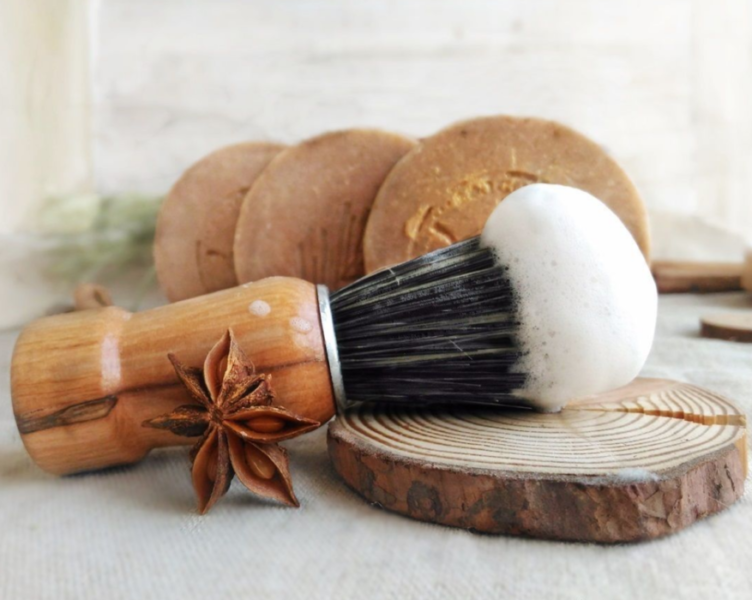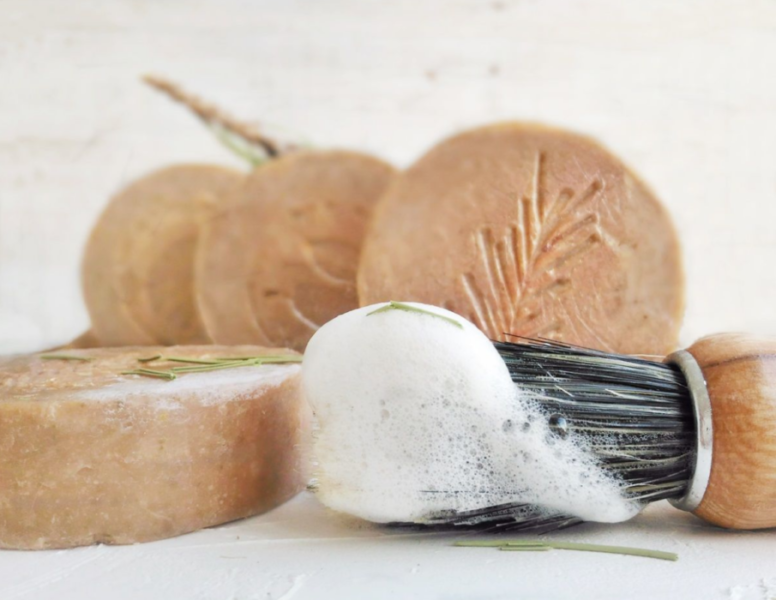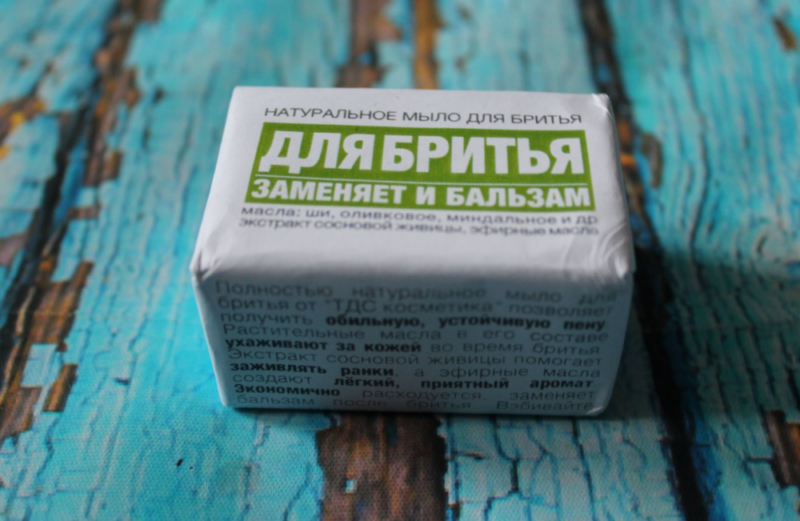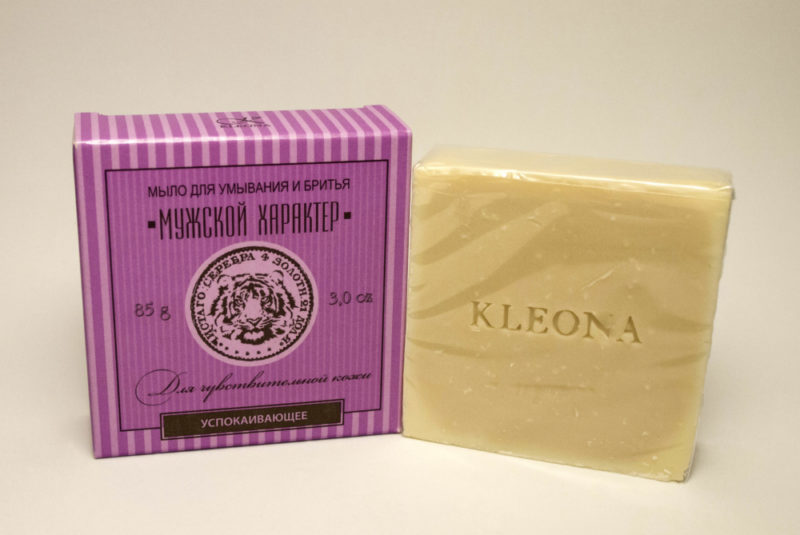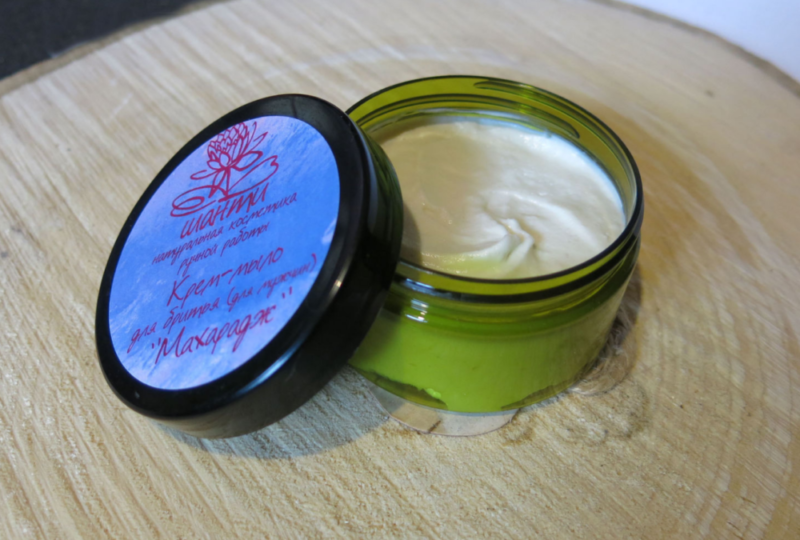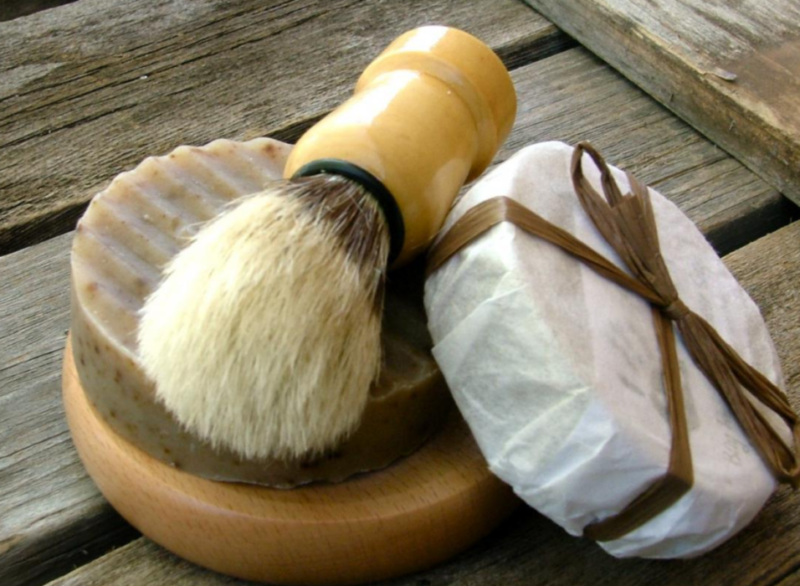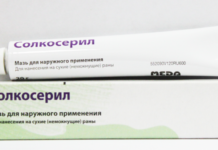Shaving soap is a popular men's cosmetics that you can make yourself. A home remedy is easy to do. Such products will be inexpensive and much more useful than purchased options.
Material Content:
History of Soap Origin
During excavations in Mesopotamia, archaeologists saw one of the first evidence that soap making has a long history. In the places of the Sumerians, scientists discovered clay tablets that were created in about 2800 BC. They described the manufacturing process of a cosmetic product based on ash and molten fat. Different variants of antique soap were used by the inhabitants of ancient Greece and the ancient Roman state. True, such products in ancient times did not resemble today's versions of detergents. In today's performance, solid soap appeared only about 200 years ago.
Men can comfortably get rid of stubble and keep their silky skin on their face with various shaving products. On sale you can find solid and creamy types of products, as well as powders. The most convenient and popular option is a washer or briquette of solid structure. Such a tool is often sold in the form of a stick or in a special bowl.
Why Use Shaving Soap
Solid shaving soap is a separate category of cosmetics.
Its characteristic features:
- has a multicomponent composition, contains some specific ingredients;
- forms a lot of thick and dense foam during use;
- prepared by special technology.
Useful properties of shaving soap:
- has an anti-inflammatory effect;
- softens the skin;
- makes regrown hairs more tender;
- well relieves irritation, redness.
Too dense varieties are not recommended for use only by those who are always in a hurry or often shave outside the house.
Advantages and disadvantages
Environmentally friendly product can be made independently.
The resulting cosmetics have several advantages:
- it rarely causes allergic reactions;
- cheaper than store options;
- stored longer than purchased foams or mousses;
- for one procedure you need very little soap, because it foams well, as a result of the simple work of the resulting composition is enough for a long time.
In a self-made product, you can easily adjust the number of different components, which makes it safe and most useful. It is appropriate to independently adjust the ratio of ingredients to avoid allergies. The composition is also not forbidden to regulate depending on the type of skin, its sensitivity. It will turn out to create an original tool taking into account personal tastes and preferences. For this, essential oils with favorite aromas are used in the recipe.
The disadvantages of such a soap are few:
- Extra time required. First, to make the product, and later to shave. After all, the procedure takes longer than using gels and other more liquid products.
- The product is not always comfortable to use. Soap needs to be mixed with water, in addition you need to use a brush. This is not always convenient during holidays, business trips or being in other conditions outside the home.
- Sometimes there are problems with the skin. Usually, those who have dry skin or people who are prone to allergies are faced with this.
Varieties of soap
Three types of shaving soap are distinguished, taking into account its main composition:
- Made from animal fats - the most nutritious. Its shelf life is shorter than that of other varieties. And in the process of removing unwanted vegetation, a relatively large amount of liquid is required to produce foam.
- A product is created on the basis of some vegetable oil. This is usually palm, coconut or olive oil. Sometimes a mixture of several types is used. The qualitative composition of the resulting soap is slightly inferior to the first option. The product is not recommended for use in the winter, as a vegetable-based product in the cold can tighten the skin, causing discomfort.
- Glycerin is usually the lowest grade. It often causes shaving quality deterioration, leads to dry skin and other dermatological problems.
In the process of using the products, a special device is additionally used - a shaving brush. First, with the help of soap make a dense thick foam. Then, in a circular motion, distribute the composition on the surface of the skin of the face with a brush. Thanks to the lush soapy mass applied with the brush, the razor will glide gently without damaging the skin.
How to cook at home
Options for making soap at home:
- Buy a high-quality soap base in the store. Then combine it with other ingredients.
- Make a remedy using baby or household soap.
- Create a soap base yourself and get one hundred percent home-made product.
Additionally, honey, cosmetic clay, purified water, stearin, glycerin, and other ingredients are used. Essential oils are added to the soap base: coconut, lavender, olive, peach and others.
The best shaving soap is a unique, self-made product with an individual aroma and appearance.
It can be done by combining different types of essential oils in recipes. The effect on the nervous system of the finished product will be different. For example, lavender, ylang-ylang, bergamot or geranium will help calm down.Citrus aromas, mint, rosemary, ginger or coniferous smells activate the nervous system, invigorate. Sandalwood reduces aggressiveness, helps restrain negative emotions. When choosing, take into account the different effects of funds on the skin. Tea tree essential oil helps reduce dermatological irritations. Ylang-ylang rejuvenates the skin, and thanks to rosemary, it is easier to get rid of acne.
Shaving soap is prepared cold or hot. The choice of option depends on the availability of time for the soap maker and the effect that he wants to achieve.
- In a cold process, two solutions are first separately prepared - oil and alkaline. Then they are mixed to a homogeneous mass at a temperature of from 40 to 60 degrees. As a result of a chemical reaction, the soap heats up, gradually changes the consistency, takes the form of a gel. The entire process takes up to an hour of personal time, and then the remedy matures for several weeks.
- Hot cooking is a traditional option for experienced professionals. The soap is kept in a water bath for 4-5 hours, constantly mixed and added liquid. After cooking, it becomes very hard, some of the properties of the components are lost during heat treatment. But alkali does not "eat" essential oils.
Some masters combine two types of preparation of a cosmetic product. First, soap is prepared in a cold way and poured into special heat-resistant molds. And then place the product for an hour in a furnace heated to 75–80 degrees. The finished soap is left in the oven for the night, and only after that is it taken out.
With calming effect
A simple recipe in which the main ingredient becomes a finished soap base. This cream soap is suitable for men who have sensitive or dry skin.
You will need:
- soap base - 100g;
- lavender oil - up to 25 drops;
- tea tree oil and bay leaf - 10 drops each;
- coconut oil - 5 ml;
- honey - 1 tsp.
Cooking:
- Melt the soap base in a water bath.
- Combine it with coconut oil and honey, mix.
- Add essential oils, make the mixture homogeneous.
- Place the finished product in the appropriate size molds.
- You can apply after complete solidification.
DIY soap cream
Tool based on laundry soap.
Cooking:
- On a grater with large teeth, process 100 g of soap.
- Pour it with 50 ml of warm water and place in a water bath.
- Add 1 teaspoon of sugar to the mixture. When the soap and sweet crystals dissolve well, mix until smooth.
- Take 8 g of laurel oil, combine it with 5 g of dimethicone and 10 g of talc.
- Make a composition without any lumps, and then add it to the soapy mass.
- Already pour 1 g of cypress oil into the cooling mixture.
- Stir, pack in a suitable container and leave to cool.
After 2-3 days, remove the soap from the mold and place under a paper or fabric napkin. So it lies for another 10 days, then you can use the finished product.
With invigorating effect
An interesting recipe for making homemade soap from scratch. Thanks to rosemary and mint, it increases the overall tone of the body and gives strength.
Cooking:
- Melt 80 g of coconut and palm oils in a water bath. Then add to them 80 g of olive.
- Pour 300 ml of a little warm water into the mixture and beat everything with a blender.
- Add 110 g of sodium hydroxide, 120 g of glycerol and 300 g of stearic acid to the composition.
- Warm up the ingredients in a water bath for about half an hour, until the mass thickens and becomes transparent.
- Pour 2 tbsp. l white clay, mix composition.
- When the mixture cools down a little, add 5 drops of peppermint and rosemary essential oil.
- Put the finished product in the mold to freeze.
Presented homemade shaving soap can be made with other essential oils. For example, it is not forbidden to use coniferous (cedar, pine) ingredients.Particularly popular are fatty compositions based on orange, lemon, grapefruit and other citrus fruits.
Important cooking nuances
What to look for in the process of cooking handmade soap:
- You can not take components with an expired shelf life, and also independently increase the dosage of the ingredients included in the recipe.
- In the work using ceramic or glassware.
- Do not mix components with metal devices, use a wooden spoon.
- Essential oils should not be thrown into a hot mixture.
- Exclude the heating of the ingredients on fire. They are melted only in a water bath, placed in a suitable container.
- In the presence of allergies, essential fats are used minimally. In this case, it is advisable to take only one type of product for the recipe.
During the soap making procedure, safety precautions are observed, because not all components in the recipes are safe.
Sodium hydroxide can cause burns to the skin or mucous membranes of the eyes. Some ether compounds can provoke allergic reactions or have a narcotic effect, others have phototoxicity.
Dermatologist's recommendations
Before using shaving soap, you need to soften the bristles. If it is not too hard, it is enough to wash with water.
Some useful tips:
- Holders of dry and sensitive skin are more suitable home remedies made from a finished soap base. Men with normal or oily integuments are appropriate to use any options for home-made products.
- For shaving, it is better to take a short brush, the brush of which is made of a little hard material.
- Whipped soap foam is applied by rotational movements, evenly distributing it on the surface. This will allow you to raise your hair for a better shave, remove dead skin and conduct a light facial massage.
If a person suffers from intolerance to certain substances, then the form of oil associated with this product is not used in recipes. Allergy sufferers should use the essential components in the process of soap making. Their doses are reduced.
Do-it-yourself soap is recommended for creative people who want to please themselves, their loved ones and friends with useful products. In the process of producing a fragrance, you can get a lot of positive emotions, learn the original craft and create a personal version of an effective result.
- Lily


